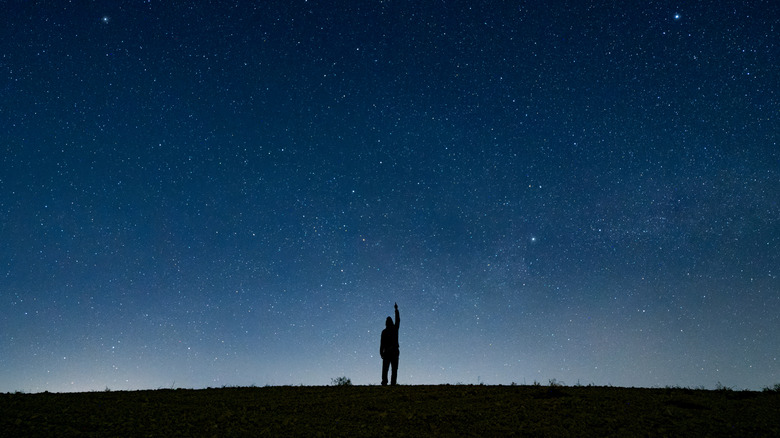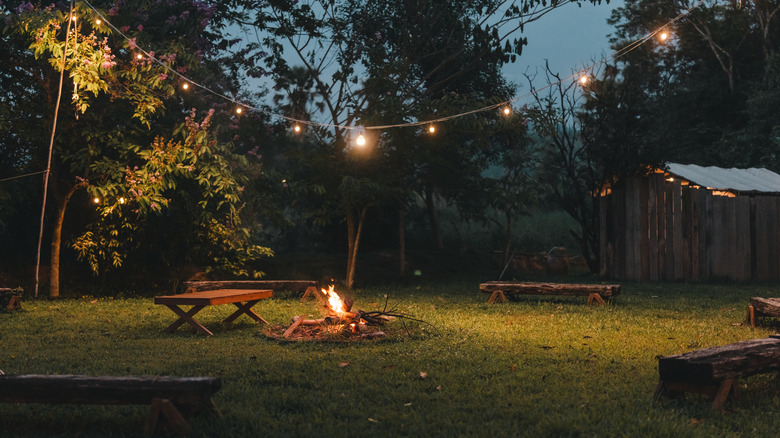This Underrated Florida State Park Offers Immaculate Stargazing Opportunities
If you've ever visited Orlando, you've probably noticed strobe lights shooting into the sky every night, and maybe even fireworks if you're close to one of the city's many theme parks. With all that light pollution, it may seem unlikely that just a 2-hour drive away lies a lesser-known Florida state park with one of the state's darkest skies. At Kissimmee Prairie Preserve State Park, visitors can see the Milky Way with the naked eye, and, if they're lucky, even catch sight of rocket launches.
As it makes up part of the Everglades headwaters, the preserve is a rare dry prairie ecosystem that shifts between a wet season and a dry season marked by frequent lightning-sparked fires. In this landscape, fire is not destructive but essential, preventing trees from overtaking the prairie and allowing wildflowers and low-lying plants to thrive. The park is home to alligators, wildflowers, and more than 150 bird species. As Florida's largest remaining dry prairie, it also provides vital habitat for rare and endangered species, like the grasshopper sparrow.
Cattle ranchers once used the prairie (hence the Floridian pejorative "cracker," used to describe the cracking noise made by cattle ranchers' whips), and during World War II, it became a U.S. Air Force training site. In 1997, the land was designated a state park, and nearly two decades later, it earned recognition as Florida's first Dark Sky Place, an international designation that protects natural night skies. The park closes at dusk for day visitors, but several camping options allow guests to stay late and take in the view, cementing this reserve as one of the best state parks to visit in Florida.
Adventuring through Kissimmee Prairie Preserve State Park
With more than 100 miles of trails, the preserve is ideal for hiking, cycling, and horseback riding. Cyclists can rent bikes at the office for $2 per hour or $6 for 4 hours, while horseback riders must bring their own horses. Several trails are clearly marked and explained at the park office. A good starting point is the Kilpatrick Hammock Trail, a 1-mile loop with easy terrain and scenic views.
Those eager to explore further may find trail explanations on the Florida State Park's official website a bit clunky, but it's possible to follow longer routes using GPS apps. Another option is to embrace the old-school feel of the park and purchase a printed map through the preserve's website. To cover more ground, book the popular prairie buggy tour, a 2- to 3-hour guided ride through the backcountry that runs from November to March. Guides provide a checklist so visitors can track the wildlife they encounter.
Among the highlights are the burrowing owl, a threatened species only 9 inches tall that often blends into the grass, and the Florida grasshopper sparrow, the rarest bird in North America. The sparrow's distinctive call can sometimes be heard on the trails, but they're so hard to find that park staff spend significant amounts of time searching for them each year. Increase your chances of a rare glimpse at this endangered species with a bird call app such as Sound ID.
Planning your trip to Kissimmee Prairie Preserve State Park
The preserve, which we think easily qualifies as one of Florida's most underrated state parks, is about a 2-hour drive south of Orlando International Airport. To experience the night sky, plan to stay overnight and enjoy Kissimmee Prairie's serene atmosphere. Holders of a Florida State Park annual pass can also apply for an after-hours permit.
Camping options vary from primitive sites along the trails, including only a water pump ($5 per adult and $1 per child) — accessible only by hiking or cycling — to glamping cabins with full amenities. Glampers at the Luxury Pioneer Tents ($120 per night including parking) have access to air conditioning, plus private kitchens and outdoor barbecue areas, with sleeping space for up to six people in a mix of queen and bunk beds.
The park's main campground, a happy middle between roughing it among the gators and glamping luxury, costs around $16 per night for pitching a tent and includes bathrooms and electricity. But for the best view of the galaxies, the astronomy campground is your prime choice. Campfires and bright lights are prohibited there to eliminate light interference, ensuring visitors enjoy the clearest possible view of the Milky Way. Wherever you stay, plan to get cozy and take in the best stargazing Florida has to offer.


